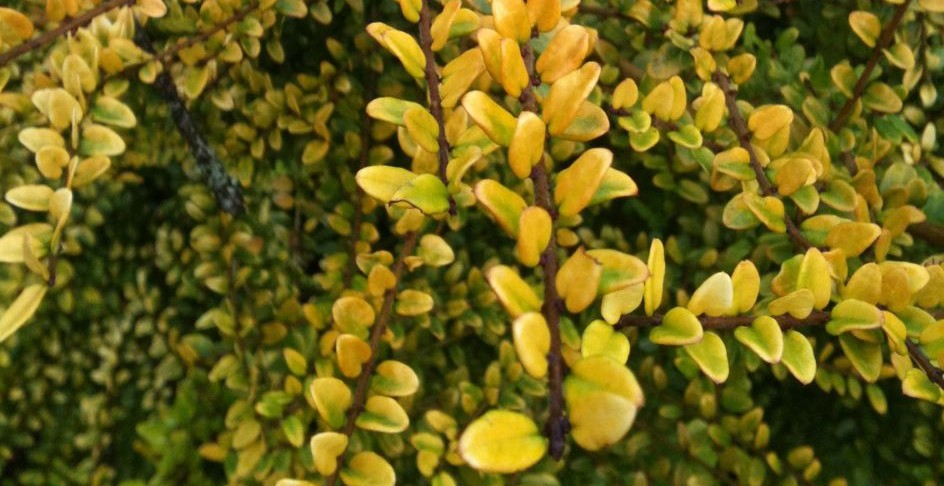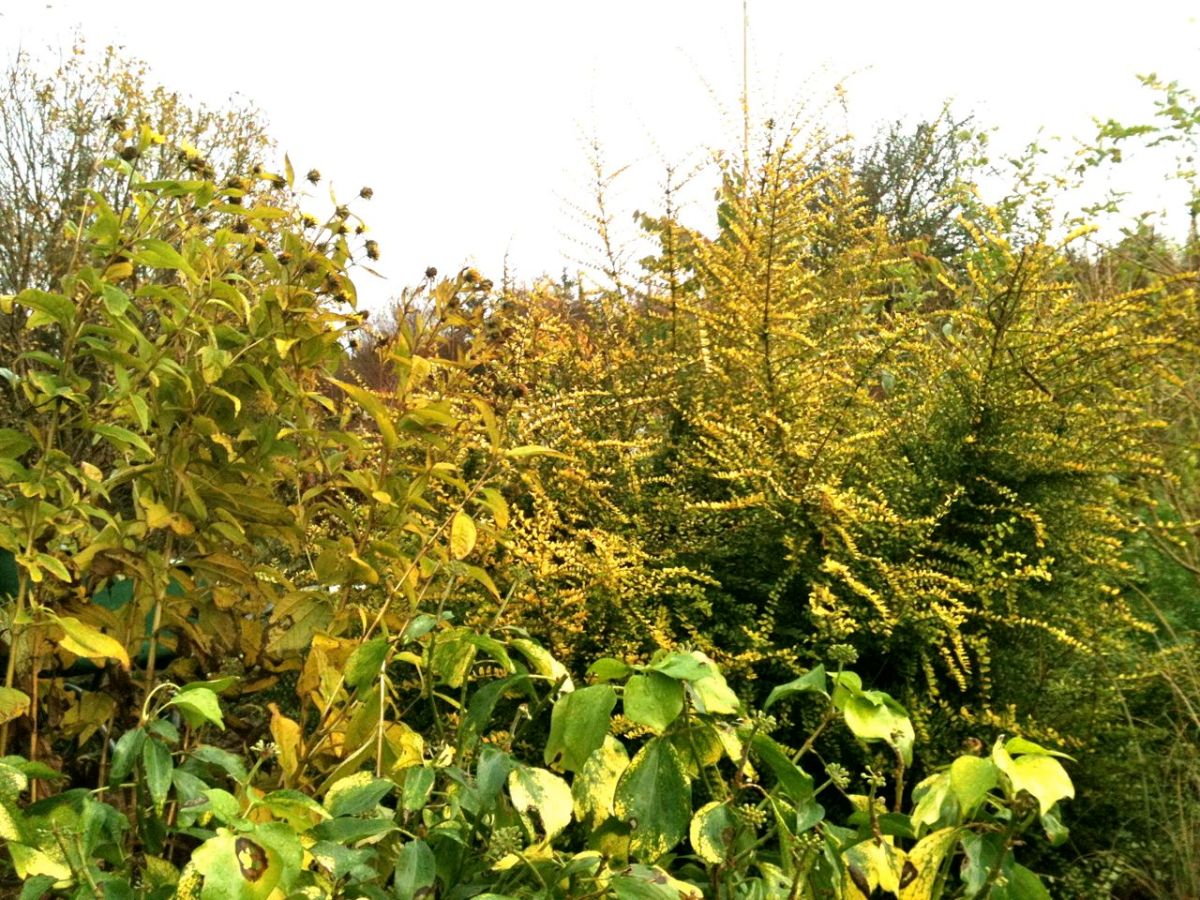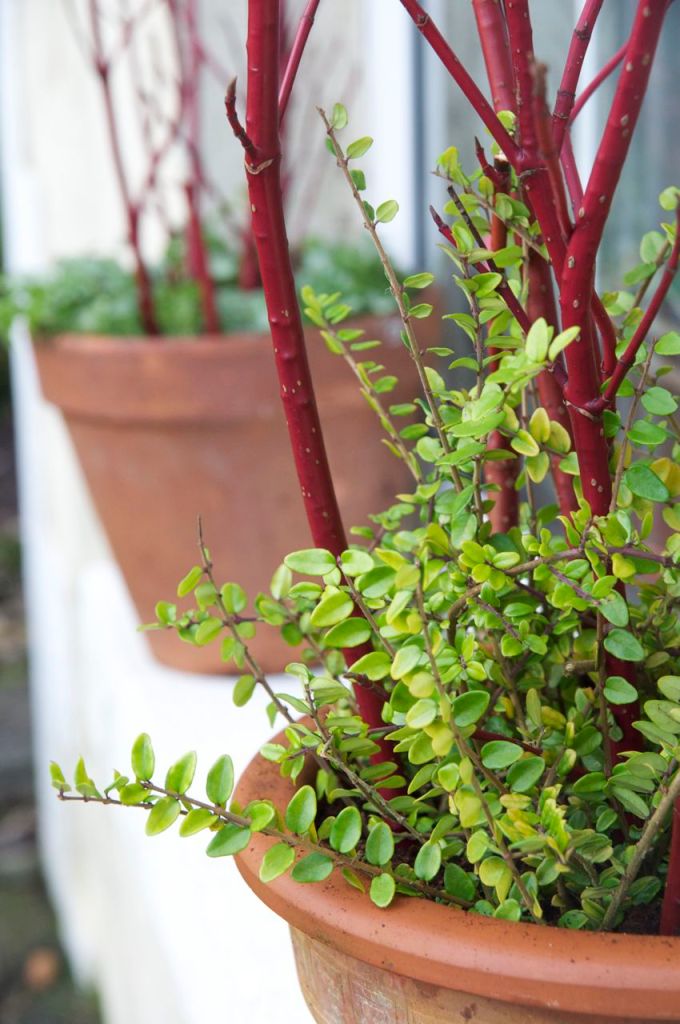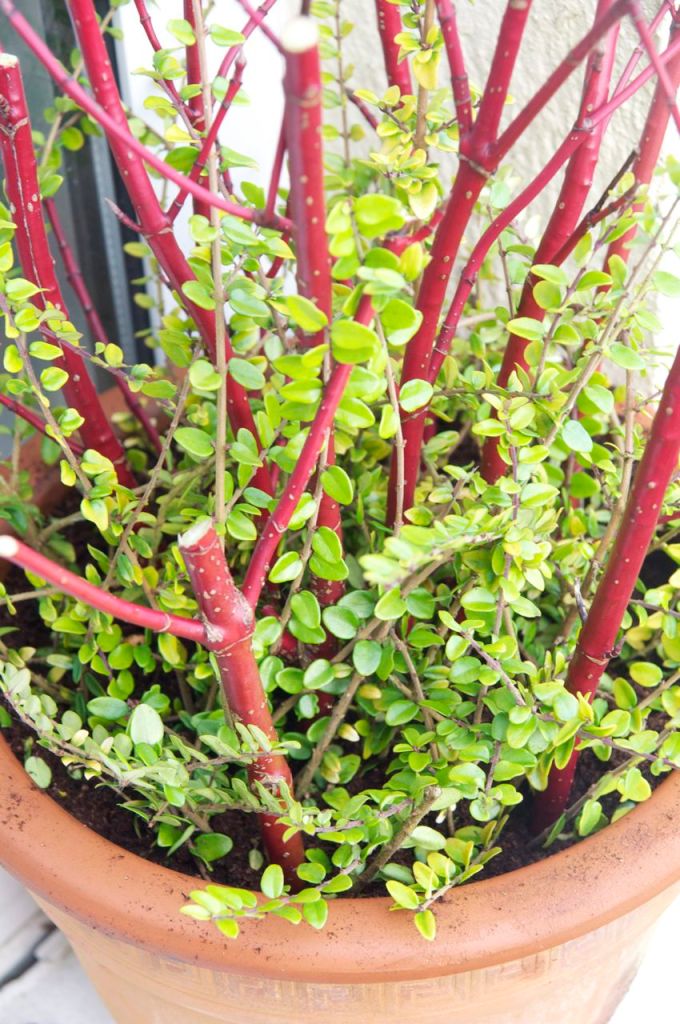
I thought it was a box hedge that we were chopping. We had a saw, a shears and even an axe. It was a family event. My dad was cutting the thick stems with the saw while questioning the wisdom of the act. My mother directed the operations, ensuring him that it had to be done. I chopped up the cut stems with the shears, The axe lay on the ground unused, but at least we prepared. I piled the chopped stems into a wheel barrow and trundled them to the end of the garden.
My barrow was piled high, too high! For I was eleven and eager to prove that a boy that skinny could do the work of a man! My twiggy load seemed to mock my twiggy frame and although it was not heavy, my over loading made it an unsteady burden. Loose leaves blew in the wind. Branches grabbed onto other shrubs as I passed, as if clinging to another plant would some how give them a reprieve from their compost heap destiny. Occassionally the shaky pile of stems would dive over the side, like they were desperate to avoid their fate. I would be devastated by my latest failure, quickly looking around to ensure their was no witnesses to my embarassment. Quickly I would pile them back on top of the barrow. After throwing them unceremoniously on to the pile of garden debris that we fancifully called a compost heap I ran back with the empty barrow to impress everyone with my speedy work rate.
That is one of my earliest memories of my many encounters with the hedge that bordered my parents front garden and the Daly’s next door. Seven years later I would learn that the hedge was not in fact a box hedge as my father called it but a hedge of Lonicera nitida. My dad was not alone in this misguided nomenclature, many people refer to the honeysuckle relative as box, real box hedge is another unrelated plant called Buxus sempervirens. If previous owners of the home of my childhood had planted real Box hedge instead of Box-leaf honeysuckle, then we would have had less hedge butchering days, much less trimming and a much neater line of continuos shrubs that we call a hedge.
The previous owners planted Lonicera nitida as a hedge, perhaps also the misapprehension that it was a box hedge, hoping to emulate the neat trimmed hedges of large country estates and fine gardens pitured and described in gardening books. Many people around the country did the same, the unruly stems carrying tiny dark green leaves protrude from hedgerows all over the country side, further investigation usually reveals a derelict cottage hidden from view by the hedge. I guess that the untidy Lonicera was widely planted in late forties and early fities. The ruins of the houses lie lifeless and empty while the hedges thrive unbounded by human intervention, their scrawling twigginess thriving with neglect. If one did not understand the history of rural Ireland you might think that the occupants of the houses left because they could not keep their hedges under control, but their emigration was due to economics rather than gardening troubles.
Through my teenage years the daunting task of trimming the front hedge became more punishment that fun. After my college days and when my gardening enthusiasm had been inspired, the front hedge was still viewed with a degree of dislike. It grew so fast, that any misplaced belief that our hedge could resemble a neat Box was shattered by time I had to give it its third or fourth trimming during the summer. Lonicera nitida does not do neat, at least the ones we have in our gardens in Ireland
When reading the invaluable tome that is W.J. Bean’s Trees and Shrubs Hardy in the British Isles, I found out that the Lonicera nitida clone that we grow is much less suited to being a neat hedge than a form of it that grows in Germany. The plant introduced by the prolific plant hunter Ernest H. Wilson at the dawn of the 20th century. There are different forms, some much slower and neater growing than the one we have in common cultivation. Its typical, the Germans get the neat tidy well behaved plant, and we Irish grow the wild, untidy, disorderly form.
Not quite as comon but still widely grown is the form with yellow leaves, Lonicera nitida ‘Baggesen’s Gold’. This plant I treated with the same disrespect that I had for the green leaved plant. It has the same bad hair day outline, but a warm golden presence. Gradually I started to view it in a new light. I realised it does not want to be clipped into a defined line, it is a bit like an eleven year old boy, much happier with messy hair and dirty pants than with grooming and shirt and tie. I planted it in our yellow border, it grew with vigour as one would expect, the shears was kept at long distance and its branches grew without hinderance. Now it fills it space with character and colour, as it grew in the garden, it grew on me.

Last week I had to dig it up, I did so with great care as its move is only temporary. It had to make a journey to a temporary home until work on our ne wooden building is completed, our new classroom. So once again I was trundling with an over flowing wheelbarrow of Lonicera nitida, this time the fate of the Lonicera is for much better, replanting rather than compost. An this time the wheelbarrow did not topple, at least no one saw it topple.

Now when I travel along a country road, I enjoy the sight of the dark green untidiness that is Lonicera nitida. I am pleased with its character, they refuse to be bound by strict regulation, they wont be told what to do, they shrug off imposed rule, they enjoy their freedom. Long live Lonicera nitida.



Neils Baggesen

I have been searching for Lonicera motifs Baggesen’s Gold for ages. No garden centres that I go to seem to stock it. Also Lonicera motifs makes a lovely tree with fragrant flowers in a warm spot.
It is a super easy plant to propagate. It usually layers itself spontaneously. If you stick a stem into the soil it will usually root.
Hi Ciaran
I googled Lonicera nitida to see how tightly I could cut it back and up popped your article on Baggesen’s Gold ,the very hedge I’m trying to renovate .It’s blocking a Gate,if I cut back in to the center will I kill it.I don’t want to take it out as it is on the boundary.
Margaret
Hi Margaret, you can cut Lonicera nitida as hard as you want to, it is virtually indestructible! It is hard to kill it…
very informative and useful article about nitida. thanks for sharing